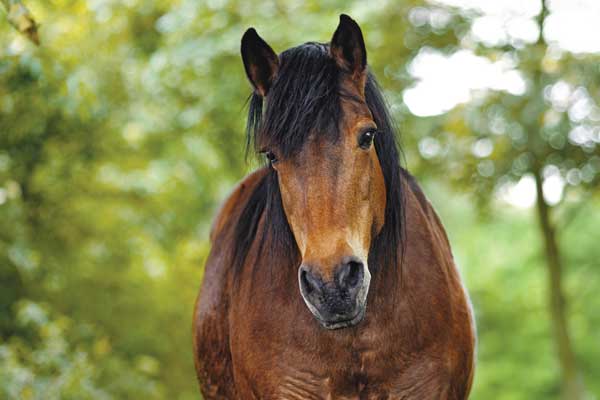
Horse owners often wonder if their horses are expressing emotions or equine emotional intelligence. While they may not have the same capacity for complex human emotions like shame, embarrassment, pride and guilt, there is evidence that horses feel pain, loneliness, grief, happiness or contentment, and other simple emotions.
We can see the anxiety in a sweaty, pacing horse who has just entered an unfamiliar stall at a new show facility. And we can see horses express excitement when they see a buddy return from a week of showing away from the farm. But what level of emotional intelligence are we actually able to attribute to horses?
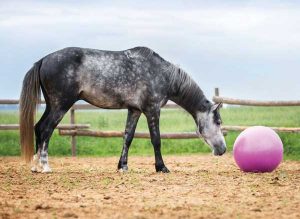
Equine emotional intelligence is defined as the ability to monitor one’s own and another’s emotions, to discriminate between different emotions and label them appropriately, and to use emotional information to guide thinking and behavior.
Discerning whether animals have any level of emotional intelligence is a lot more difficult than with people since they can’t talk to us. But recent research has been looking into whether horses can detect emotions in humans and other horses, how they express them, and whether this directs their behavior and especially their interactions with humans and other horses.
Vocalizing Emotions
There are two main dimensions when understanding animal emotion: whether he is calm versus excited, and whether it’s a positive emotion versus a negative one.
A study from Switzerland published in April 2015 looked at both dimensions as they relate to horse whinnies. The study was part of a series of studies headed by Elodie Briefer, Ph.D., M.S., associate professor at the University of Copenhagen.
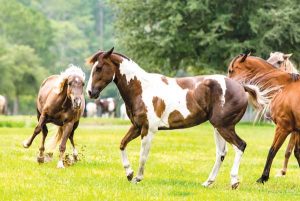
“Horses were ideal for this study because they are very social and somewhat vocal, and we could compare them easily with Przewalski’s horses, their wild relative,” says Briefer.
During the study, horses were placed in positive or negative situations, or a neutral control situation. Vocalizations, heart rate (a strong indicator of physiological stress), and changes to behavior and physiology (respiration and skin temperature) were recorded.
One significant—and unexpected—discovery was that all horse whinnies have two separate frequencies, which is rare for mammals.
“The lowest frequency indicates how intense the emotion is, and the highest frequency, as well as the duration of the whinny, indicate if the emotion is negative or positive,” says Briefer.
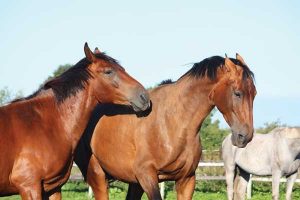
In a follow-up study published in August 2017, researchers found that even similar species—Przewalski’s horses and domestic horses—may have different vocal expressions, although there were some similarities. Whinny duration and the higher frequency were the most reliable indicators of positive versus negative emotion in domestic horses, but these were not affected in Przewalski’s.
They also noted that nickers and squeals only have one frequency. Nickers are similar to the lower frequency in whinnies, while squeals are similar to the higher frequency.
This study also showed that interactions that triggered avoidance (like a bite, kick, chase, or threat and social separation) produced more whinnies and squeals. Meanwhile, a horse approaching another in play, mutual grooming, and food anticipation produced more nickers.
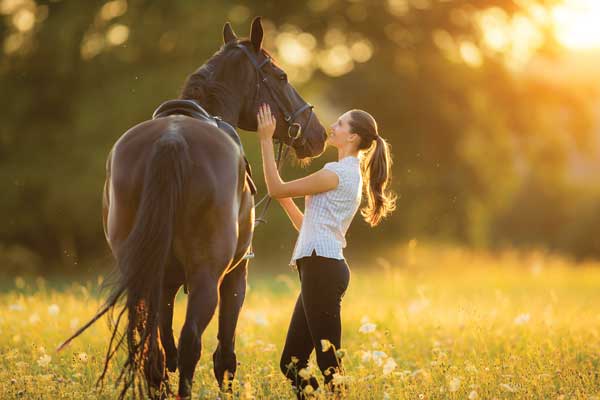
“In a followup study, we found that other horses can perceive the difference between positive and negative whinnies, which means that they could potentially be affected by the sounds of other horses,” says Briefer.
Reading Human Emotions
So we’ve determined that horses’ vocalizations play a role in communication. But can horses understand human emotion?
A 2018 study out of Japan says yes, that horses can integrate a human’s facial expression and voice to “read” the emotion behind those cues. Horses were shown a picture of a facial expression on screen along with a human voice with either a similar emotional value or a different condition.
Horses looked for more time at a caretaker’s face when voice and facial emotions didn’t match compared to when they did. If there was a negative situation, the horse looked at the speaker for significantly longer when a stranger was used as compared with a caretaker.
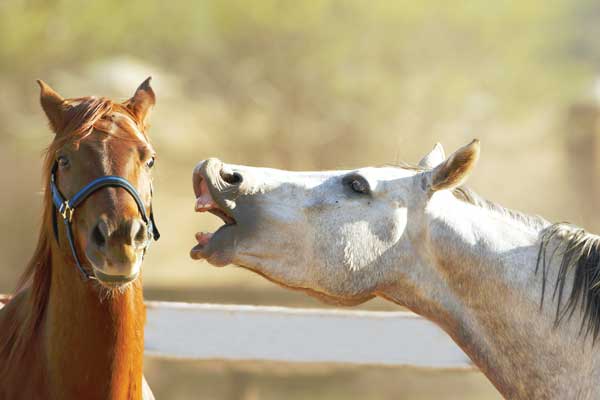
Researchers suggest this is because horses associate the emotional value of human facial expressions with the emotional value of human voices, even if it’s with a stranger. This suggests that interactions involving emotional information have played important roles in the social signals of horses throughout their history with humans.
Future Research Into Equine Emotional Intelligence
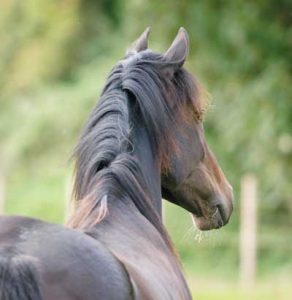
The research into equine emotional intelligence continues. Briefer’s next project involves finding out how the two frequencies of whinnies are produced and by which mechanisms and structures, and to learn the function of them.
“In order to test their functions, I will play back natural and artificially modified sounds containing only one of the frequencies, and look at horse responses to these sounds.”
Of course, there is a lot more research that needs to be done on equine emotional intelligence. But one thing is for sure, we can make our own observations about how certain experiences affect our horse’s behavior and think about what this means for our horse’s emotional welfare and happiness.
This article on equine emotional intelligence originally appeared in the December 2019 issue of Horse Illustrated magazine. Click here to subscribe!




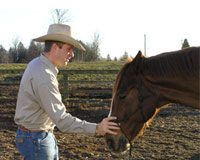

I used to be a racetrack groom and took care of a thoroughbred named Charlie Miller. Loved him. He would exhibit such pride whenever he won a race: posed for the win photo and pranced all the way to the after-race testing area (“the spit box”). But if he lost by a nose, he was angry. If he lost by a larger margin, he was dejected and he moped until I told him it was ok, he’d get them next time, he was still a great runner. (Of course, the carrots helped. But he always got a carrot with the bran mash after a race.) I have similar stories about other horses, (racehorses and riding horses) but Charlie was the stand-out. So, yes, some horses also feel pride and shame.